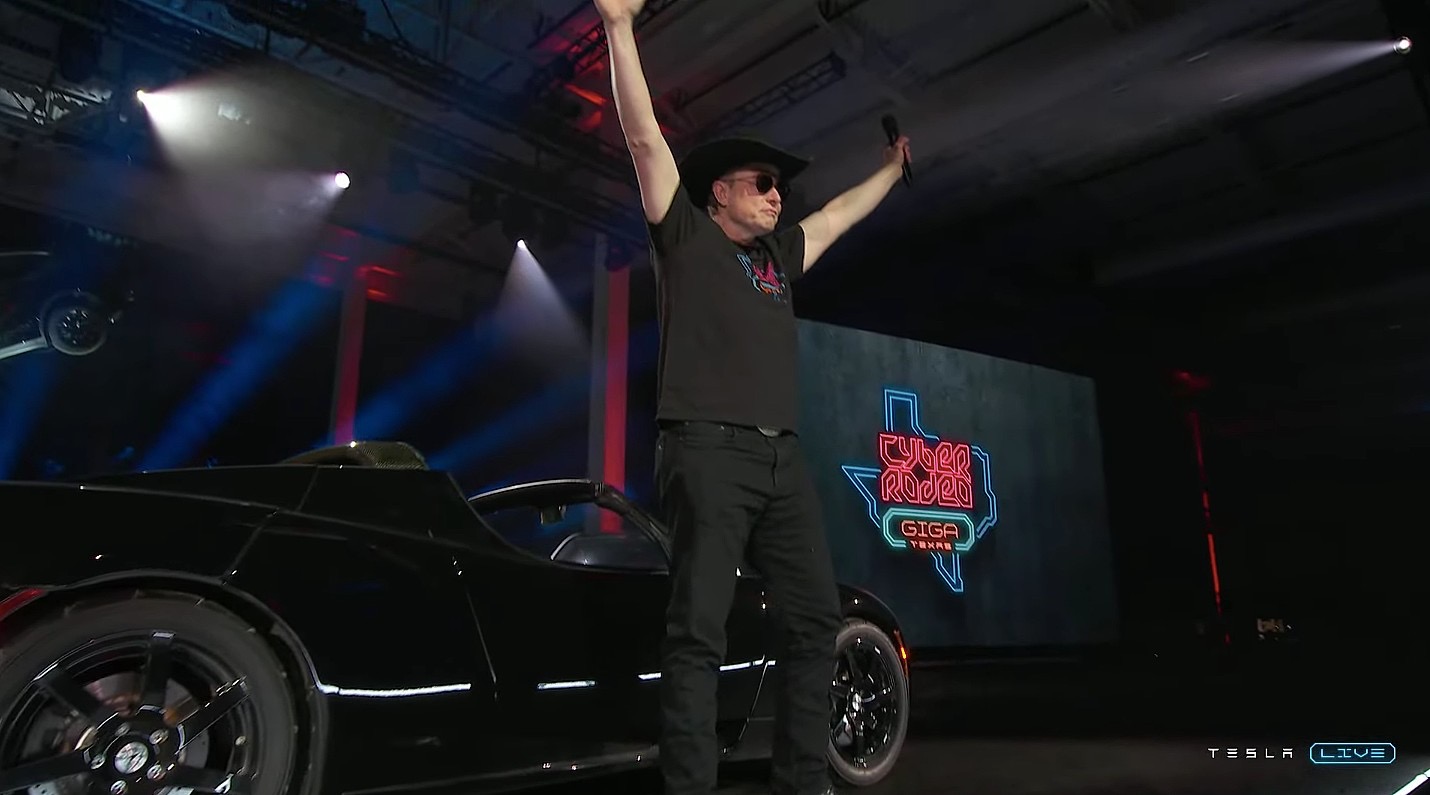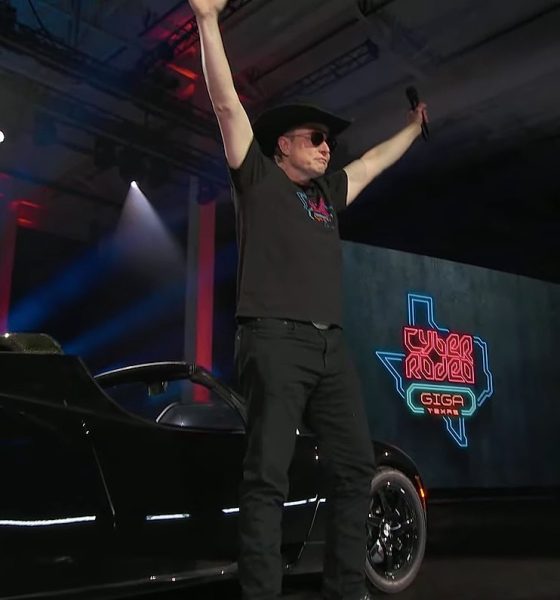

News
Tesla’s Elon Musk received commitments for $46.5 billion for Twitter acquisition attempt
Tesla CEO Elon Musk has hinted that he has a “Plan B” just in case his initial acquisition attempt for Twitter does not succeed. A new securities filing published on Thursday appears to hint at what this “Plan B” could be.
As noted in a Schedule 13D filing, Musk is currently exploring a tender offer to purchase some or all Twitter stock directly from shareholders. The Tesla CEO noted that this new strategy was adopted partly because Twitter’s Board of Directors had not responded to his initial acquisition offer. What’s interesting, however, is that Musk has received commitments for $46.5 billion to help finance the potential deal.
The relevant section of the 13D filing follows:
“Twitter has not responded to the Proposal. Given the lack of response by Twitter, the Reporting Person is exploring whether to commence a tender offer to acquire all of the outstanding shares of Common Stock (together with the associated rights issued pursuant to the Rights Agreement (the ‘Rights’ and, together with the Common Stock, the ‘Shares’)) that are issued and outstanding (and not held by the Reporting Person) at a price of $54.20 per share, net to the seller in cash, without interest and less any required withholding taxes, subject to certain conditions (the ‘Potential Offer’), but has not determined whether to do so at this time.
“To finance the Proposed Transaction or a Potential Offer, entities related to the Reporting Person have received commitment letters committing to provide an aggregate of approximately $46.5 billion as follows:
(i) A debt commitment letter, dated April 20, 2022 (the “Debt Commitment Letter”), from Morgan Stanley Senior Funding, Inc. and certain other financial institutions party thereto as commitment parties (collectively, the “Commitment Parties”) pursuant to which the Commitment Parties have committed to provide $13 billion in financing to the Reporting Person and related entities as follows: (a) a senior secured term loan facility in an aggregate principal amount of $6.5 billion, (b) a senior secured revolving facility in an aggregate committed amount of $500 million, (c) a senior secured bridge loan facility in an aggregate principal amount of up to $3 billion and (d) a senior unsecured bridge loan facility in an aggregate principal amount of up to $3 billion ((a) – (d) collectively, the “Debt Facilities”);
(ii) A separate debt commitment letter, dated April 20, 2022 (the “Margin Loan Commitment Letter”), from Morgan Stanley Senior Funding, Inc. and certain other financial institutions party thereto as commitment parties (collectively, the “Margin Loan Commitment Parties”) pursuant to which the Margin Loan Commitment Parties have committed to provide $12.5 billion in margin loans (the “Margin Loan Facility”), the proceeds of which will be distributed or otherwise made available to Purchaser; and
(iii) An equity commitment letter, dated April 20, 2022 (the “Equity Commitment Letter”), from the Reporting Person pursuant to which the Reporting Person has committed to provide equity financing for the Proposed Transaction or the Potential Offer sufficient to pay all amounts payable in connection with the Offer and the Merger (plus related fees and expenses), net of the amounts to be funded pursuant to the Debt Commitment Letter and the Margin Loan Commitment Letter, which is currently expected to be approximately $21 billion (the “Equity Financing”).
Musk caught headlines last week when he announced his intention to acquire Twitter for $54.20 a share in a deal worth about $43 billion. While the Twitter Board of Directors did not formally respond to Musk’s offer, the company adopted a “poison pill” strategy on Friday in what was viewed as an attempt to block a takeover by the Tesla CEO. Twitter co-founder Jack Dorsey has expressed his support of Musk, even noting that the social media company has had a “dysfunction” for some time now.
Prior to his announcement of a proposed Twitter acquisition, Musk had purchased over 73 million shares of the social media company. By amassing a stake of over 9% in Twitter, Musk effectively became one of the company’s single largest shareholders. Twitter soon announced its plan to give Musk a seat on its Board of Directors on the condition that he could not own more than 14.9% of the company. The Tesla CEO declined the seat and issued his buyout proposal not long after.
Elon Musk’s latest filing can be viewed here.
Don’t hesitate to contact us with news tips. Just send a message to simon@teslarati.com to give us a heads up.

Elon Musk
Elon Musk and Tesla AI Director share insights after empty driver seat Robotaxi rides
The executives’ unoccupied tests hint at the rapid progress of Tesla’s unsupervised Robotaxi efforts.

Tesla CEO Elon Musk and AI Director Ashok Elluswamy celebrated Christmas Eve by sharing personal experiences with Robotaxi vehicles that had no safety monitor or occupant in the driver’s seat. Musk described the system’s “perfect driving” around Austin, while Elluswamy posted video from the back seat, calling it “an amazing experience.”
The executives’ unoccupied tests hint at the rapid progress of Tesla’s unsupervised Robotaxi efforts.
Elon and Ashok’s firsthand Robotaxi insights
Prior to Musk and the Tesla AI Director’s posts, sightings of unmanned Teslas navigating public roads were widely shared on social media. One such vehicle was spotted in Austin, Texas, which Elon Musk acknowleged by stating that “Testing is underway with no occupants in the car.”
Based on his Christmas Eve post, Musk seemed to have tested an unmanned Tesla himself. “A Tesla with no safety monitor in the car and me sitting in the passenger seat took me all around Austin on Sunday with perfect driving,” Musk wrote in his post.
Elluswamy responded with a 2-minute video showing himself in the rear of an unmanned Tesla. The video featured the vehicle’s empty front seats, as well as its smooth handling through real-world traffic. He captioned his video with the words, “It’s an amazing experience!”
Towards Unsupervised operations
During an xAI Hackathon earlier this month, Elon Musk mentioned that Tesla owed be removing Safety Monitors from its Robotaxis in Austin in just three weeks. “Unsupervised is pretty much solved at this point. So there will be Tesla Robotaxis operating in Austin with no one in them. Not even anyone in the passenger seat in about three weeks,” he said. Musk echoed similar estimates at the 2025 Annual Shareholder Meeting and the Q3 2025 earnings call.
Considering the insights that were posted Musk and Elluswamy, it does appear that Tesla is working hard towards operating its Robotaxis with no safety monitors. This is quite impressive considering that the service was launched just earlier this year.
Elon Musk
Starlink passes 9 million active customers just weeks after hitting 8 million
The milestone highlights the accelerating growth of Starlink, which has now been adding over 20,000 new users per day.

SpaceX’s Starlink satellite internet service has continued its rapid global expansion, surpassing 9 million active customers just weeks after crossing the 8 million mark.
The milestone highlights the accelerating growth of Starlink, which has now been adding over 20,000 new users per day.
9 million customers
In a post on X, SpaceX stated that Starlink now serves over 9 million active users across 155 countries, territories, and markets. The company reached 8 million customers in early November, meaning it added roughly 1 million subscribers in under seven weeks, or about 21,275 new users on average per day.
“Starlink is connecting more than 9M active customers with high-speed internet across 155 countries, territories, and many other markets,” Starlink wrote in a post on its official X account. SpaceX President Gwynne Shotwell also celebrated the milestone on X. “A huge thank you to all of our customers and congrats to the Starlink team for such an incredible product,” she wrote.
That growth rate reflects both rising demand for broadband in underserved regions and Starlink’s expanding satellite constellation, which now includes more than 9,000 low-Earth-orbit satellites designed to deliver high-speed, low-latency internet worldwide.
Starlink’s momentum
Starlink’s momentum has been building up. SpaceX reported 4.6 million Starlink customers in December 2024, followed by 7 million by August 2025, and 8 million customers in November. Independent data also suggests Starlink usage is rising sharply, with Cloudflare reporting that global web traffic from Starlink users more than doubled in 2025, as noted in an Insider report.
Starlink’s momentum is increasingly tied to SpaceX’s broader financial outlook. Elon Musk has said the satellite network is “by far” the company’s largest revenue driver, and reports suggest SpaceX may be positioning itself for an initial public offering as soon as next year, with valuations estimated as high as $1.5 trillion. Musk has also suggested in the past that Starlink could have its own IPO in the future.
News
NVIDIA Director of Robotics: Tesla FSD v14 is the first AI to pass the “Physical Turing Test”
After testing FSD v14, Fan stated that his experience with FSD felt magical at first, but it soon started to feel like a routine.

NVIDIA Director of Robotics Jim Fan has praised Tesla’s Full Self-Driving (Supervised) v14 as the first AI to pass what he described as a “Physical Turing Test.”
After testing FSD v14, Fan stated that his experience with FSD felt magical at first, but it soon started to feel like a routine. And just like smartphones today, removing it now would “actively hurt.”
Jim Fan’s hands-on FSD v14 impressions
Fan, a leading researcher in embodied AI who is currently solving Physical AI at NVIDIA and spearheading the company’s Project GR00T initiative, noted that he actually was late to the Tesla game. He was, however, one of the first to try out FSD v14.
“I was very late to own a Tesla but among the earliest to try out FSD v14. It’s perhaps the first time I experience an AI that passes the Physical Turing Test: after a long day at work, you press a button, lay back, and couldn’t tell if a neural net or a human drove you home,” Fan wrote in a post on X.
Fan added: “Despite knowing exactly how robot learning works, I still find it magical watching the steering wheel turn by itself. First it feels surreal, next it becomes routine. Then, like the smartphone, taking it away actively hurts. This is how humanity gets rewired and glued to god-like technologies.”
The Physical Turing Test
The original Turing Test was conceived by Alan Turing in 1950, and it was aimed at determining if a machine could exhibit behavior that is equivalent to or indistinguishable from a human. By focusing on text-based conversations, the original Turing Test set a high bar for natural language processing and machine learning.
This test has been passed by today’s large language models. However, the capability to converse in a humanlike manner is a completely different challenge from performing real-world problem-solving or physical interactions. Thus, Fan introduced the Physical Turing Test, which challenges AI systems to demonstrate intelligence through physical actions.
Based on Fan’s comments, Tesla has demonstrated these intelligent physical actions with FSD v14. Elon Musk agreed with the NVIDIA executive, stating in a post on X that with FSD v14, “you can sense the sentience maturing.” Musk also praised Tesla AI, calling it the best “real-world AI” today.








